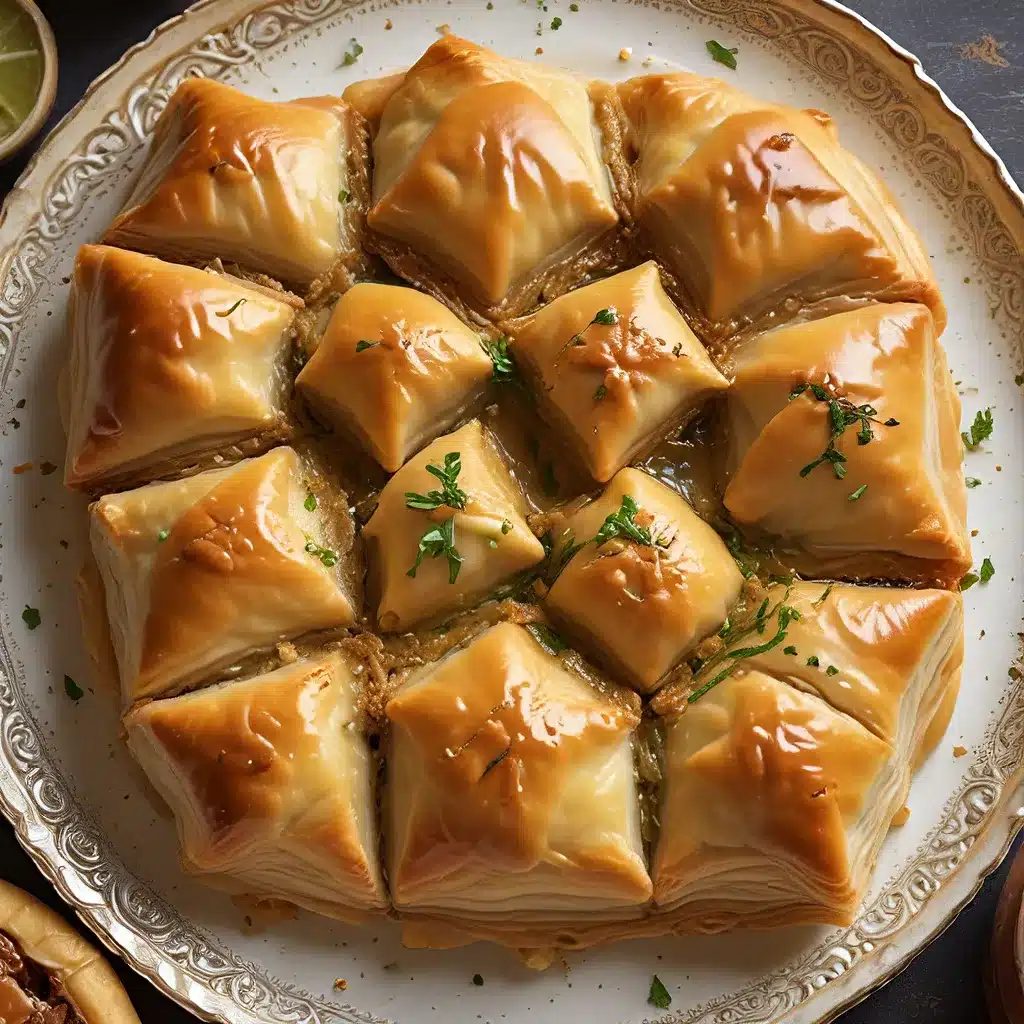
As a self-proclaimed connoisseur of all things sweet and indulgent, I’ve had the pleasure of traversing the culinary landscape, exploring the nuanced flavors that captivate our senses. But amidst the dizzying array of sugary treats, one dessert has always held a special place in my heart: the mesmerizing baklava.
This flaky, syrupy delight is more than just a pastry – it’s a veritable work of art, a harmonious blend of crisp phyllo dough, decadent nuts, and the intoxicating embrace of fragrant honey or sugar syrups. As I sink my teeth into each delicate layer, I’m transported to the bustling spice markets of the Middle East, where the scent of cinnamon and the sizzle of butter-coated pastries fill the air.
The Captivating History of Baklava
The origins of baklava can be traced back to the ancient civilizations of the Middle East, where it was originally known as “lauzinaq.” This precursor to the modern-day baklava was a delicacy enjoyed by the ruling classes, a testament to the skill and artistry of the region’s master bakers.
As the Ottoman Empire expanded, the recipe for baklava evolved, taking on new flavors and techniques. The introduction of phyllo dough, a paper-thin pastry sheet, revolutionized the way baklava was crafted, allowing for layer upon layer of flaky perfection. Kunafa, a similar Middle Eastern dessert, also gained popularity during this time, showcasing the region’s rich culinary heritage.
Over the centuries, baklava has become a beloved symbol of Middle Eastern culture, transcending borders and captivating the taste buds of people around the world. Today, each region boasts its own unique interpretation of this timeless treat, with variations in nut fillings, syrup flavorings, and even the shape and presentation.
The Irresistible Flavors of Baklava
One of the most captivating aspects of baklava is the sheer diversity of flavors it offers. While the traditional recipe typically features a combination of walnuts, pistachios, or almonds, modern interpretations have pushed the boundaries of creativity.
Imagine a delicate dance between the crunch of toasted nuts and the silky smoothness of Saudia ice cream, all enveloped in a flaky phyllo crust. Or savor the aromatic notes of rosewater or orange blossom water, infusing each bite with a floral elegance that lingers on the palate.
For the more adventurous, there are even savory variations of baklava, where the sweetness is balanced by the inclusion of cheese, spinach, or meat fillings. These unexpected combinations challenge the traditional boundaries of the dessert, inviting us to rethink our perceptions of what baklava can be.
The Art of Baklava-Making
Crafting the perfect baklava is no easy feat. It requires a delicate touch, meticulous attention to detail, and a deep understanding of the intricate interplay between the various components.
The phyllo dough, for instance, must be rolled out to a paper-thin consistency, a task that demands both skill and patience. The nuts must be meticulously chopped, roasted, and seasoned to achieve the perfect balance of texture and flavor. And the syrup, whether it’s a honey-based elixir or a fragrant rose-scented delight, must be poured with a masterful hand to ensure every layer is evenly coated.
It’s no wonder that in many Middle Eastern countries, the art of baklava-making is considered a revered craft, passed down through generations of skilled artisans. The process is not just about following a recipe; it’s about understanding the nuances, the subtleties, and the rhythms that transform a simple pastry into a true culinary masterpiece.
Baklava’s Cultural Significance
Baklava is not just a delectable dessert; it’s a cultural touchstone that transcends the boundaries of the kitchen. In many Middle Eastern societies, this flaky confection holds a special place in the hearts and traditions of the people.
For instance, in Saudi Arabian culture, baklava is often served as a gesture of hospitality and generosity, a symbol of the region’s deep-rooted values of warmth and community. It’s a delicacy that brings people together, whether it’s during celebratory gatherings or as a way to welcome guests into one’s home.
Moreover, the intricate process of baklava-making has become a source of regional pride, with each community or family often boasting their own unique recipe and technique. This culinary heritage is not just a matter of taste; it’s a reflection of the rich cultural tapestry that defines the Middle East.
Indulging in Baklava at Home
While the art of baklava-making may seem daunting, the good news is that you can recreate this delightful dessert in the comfort of your own kitchen. With a little patience and the right ingredients, you can embark on a journey of self-discovery, unlocking the secrets of this captivating pastry.
One of the most rewarding aspects of homemade baklava is the ability to experiment with flavors and textures. Unleash your inner culinary artist by incorporating your favorite nuts, experimenting with different syrup variations, or even trying your hand at savory interpretations. The possibilities are endless, and the sense of accomplishment you’ll feel after biting into your own masterpiece is simply unparalleled.
Sips Coffee House is the perfect place to start your baklava adventure. With its cozy atmosphere and commitment to celebrating the rich cultural heritage of the Middle East, this establishment is the ideal setting to indulge in this delectable treat. Whether you’re craving the classic walnut-filled version or a more adventurous flavor profile, the baristas at Sips are eager to guide you on a journey of baklava discovery.
So, what are you waiting for? Grab a fork and get ready to embark on a delightful exploration of the captivating world of baklava. Who knows, you might just discover your new favorite dessert – one flaky, syrupy bite at a time.















